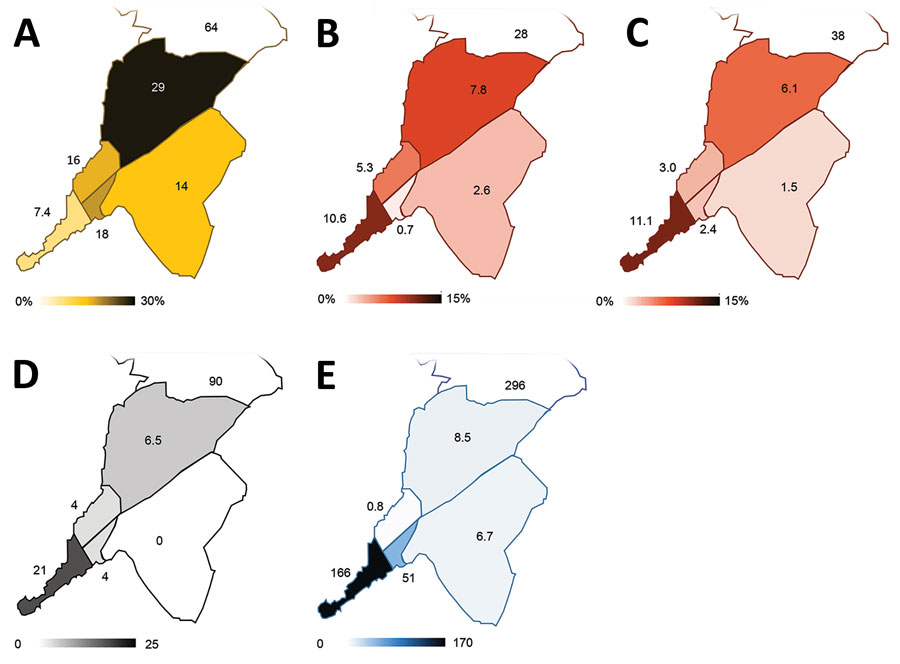Combined Epidemiologic and Entomologic Survey to Detect Urban Malaria Transmission, Guinea, 2018
Dean Sayre

, Alioune Camara, Yaya Barry, Touré Babacar Deen, Denka Camara, Mohamed Dioubaté, Ibrahima Camara, Kalil Keita, Nouman Diakité, Youssoufa Lo, Ibrahima Bah, Hadja Fanta Camara, Mohamed Saran Condé, Aissata Fofana, Abdoulaye Sarr, Eugène Lama, Seth Irish, and Mateusz Plucinski
Author affiliations: Centers for Disease Control and Prevention, Atlanta, Georgia, USA (D. Sayre, A. Sarr, S. Irish, M. Plucinski); National Malaria Control Program, Conakry, Guinea (A. Camara, Y. Barry, T.B. Deen, D. Camara, M. Dioubaté, I. Camara, K. Keita, N. Diakité, Y. Lo, E. Lama); Catholic Relief Services, Conakry (I. Bah); Stop Palu+, Conakry (H.F. Camara, M.S. Condé, A. Fofana); Centers for Disease Control and Prevention, Conakry (A.Sarr)
Main Article
Figure 2

Figure 2. Spatial distribution of key malaria indices across Conakry, Guinea, as assessed during the rapid epidemiologic–entomologic investigation, November–December 2018. Indices are shown grouped by commune within Conakry. A) Proportion of the population reporting sleeping in a space with a mosquito net hanging. B) Malaria prevalence (%) in the sample population >5 years of age, as determined by RDT during community survey. C) Malaria prevalence (%) in the sample population <5 years of age, as determined by RDT during community survey. D) Number of adult female Anopheles mosquitoes collected per night, averaged over 2 nights of collection. E) Annualized malaria incidence, reported as cases/1,000 population, diagnosed in local healthcare facilities. RDT, rapid diagnostic test.
Main Article
Page created: December 17, 2020
Page updated: January 24, 2021
Page reviewed: January 24, 2021
The conclusions, findings, and opinions expressed by authors contributing to this journal do not necessarily reflect the official position of the U.S. Department of Health and Human Services, the Public Health Service, the Centers for Disease Control and Prevention, or the authors' affiliated institutions. Use of trade names is for identification only and does not imply endorsement by any of the groups named above.
